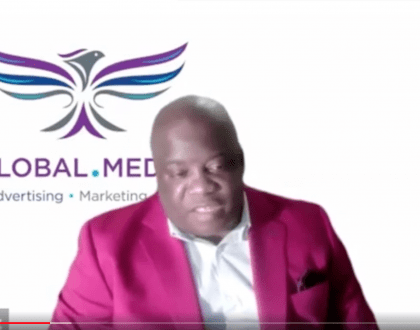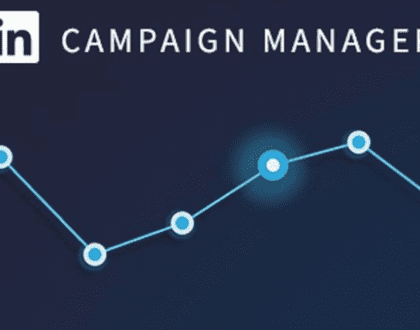Whiteboard Friday – creating demand for products & services that have little search volume
by EnyOsung
This very informative Moz video and post is reposted here because we believe that it sheds light on a common problem of many small businesses and startups in the search-focused digital age:
What can you do when your product or service has little or no search volume?
If so few people are searching for you product or service, which keywords should you use for search engine optimisation?
Is search engine optimisation worthwhile if this is the case?
This is the simple answer: Search engine optimisation can definitely still work for your business. You just have to generate interest and demand in your product or service.
Don’t be put off if what you have to sell is so new that people don’t know about it. After all you are not the first business to be in this position and you are certainly not alone. Virtually all big ideas were new and unheard off one day – Smartphones, Computer, Electricity, Coca Cola, Microsoft, Google, Facebook, Amazon, etc. You name it, they all started somewhere and are now such a part of our language that we cannot imagine a world without them.
Perhaps you really are an innovator taking the first steps to disrupt the market. Watch this video to get tips to make your business searchable and in demand by your target customers.
For reference, here’s a still of this week’s whiteboard. Click on it to open a high resolution image in a new tab!
Video transcription
Howdy, Moz fans, and welcome to another edition of Whiteboard Friday. This week we’re going to chat about a particularly challenging problem in the world of SEO, and that is trying to do SEO or trying to do any type of web marketing when your product, service, or idea has no search volume around it. So nobody is already looking for what you offer. It’s a new thing, a new concept.
I’ll use the example here of a website that I’m very fond of, but which there’s virtually no search volume for, called Niice. It’s Niice.co.
It’s great. I searched for things in here. It brings me back all these wonderful visuals from places like Colossus and lots of design portals. I love this site. I use it all the time for inspiration, for visuals, for stuff that I might write about on blogs, for finding new artists. It’s just cool. I love it. I love the discovery aspect of it, and I think it can be really great for finding artists and designers and visuals.
But when I looked at the keyword research — and granted I didn’t go deep into the keyword research, but let’s imagine that I did — I looked for things like: “visual search engine” almost no volume; “search engine for designers” almost no volume; “graphical search engine” almost no volume; “find designer visuals” nada.
So when they look at their keyword research they go, “Man, we don’t even have keywords to target here really.” SEO almost feels like it’s not a channel of opportunity, and I think that’s where many, many companies and businesses make mistakes actually, because just because you don’t see keyword research around exactly around what you’re offering doesn’t mean that SEO can’t be a great channel. It just means we have to do an extra step of work, and that’s what I want to talk about today.
So I think when you encounter this type of challenge — and granted it might not be the challenge that there’s no keyword volume — it could be a challenge in your business, for your organization, for some ideas or products that you have or are launching that there’s just very little, and thus you’re struggling to come up with enough volume to create the quantity of leads, or free trials, or customers that you need. This process really can work.
Key questions to start.
1) Who’s the target audience?
In Niice’s case, that’s going to be a lot of designers. It might be people who are creating presentations. It might be those who are searching out designers or artists. It could be people seeking inspiration for all sorts of things. So they’re going to figure out who that is.
From there, they can look at the job title, interests, demographics of those people, and then you can do some cool stuff where you can figure out things like, “Oh, you know what? We could do some Facebook ad targeting to those right groups to help boost their interests in our product and potentially, well, create branded search volume down the road, attract direct visitors, build brand awareness for ourselves, and potentially get some traffic to the site directly as well. If we can convert some of that traffic, well, that’s fantastic.”
In their case, I think Niice is ad-supported right now, so all they really need is the traffic itself. But regardless, this is that same type of process you’d use.
2) What else do they search for?
What is that target audience searching for? Knowledge, products, tools, services, people, brands, whatever it is, if you know who the audience is, you can figure out what they’re searching for because they have needs. If they have a job title, if they have interests, if you have those profile features about the audience, you can figure out what else they’re going to be searching for, and in this case, knowing what designers are searching for, well, that’s probably relatively simplistic. The other parts of their audience might be more complex, but that one is pretty obvious.
From that, we can do content creation. We can do keyword targeting to be in front of those folks when they’re doing search by creating content that may not necessarily be exactly selling our tools, but that’s the idea of content marketing. We’re creating content to target people higher up in the funnel before they need our product.
We can use that, too, for product and feature inspiration in the product itself. So in this case, Niice might consider creating a design pattern library or several, pulling from different places, or hiring someone to come in and build one for them and then featuring that somewhere on the site if you haven’t done a search yet and then potentially trying to rank for that in the search engine, which then brings qualified visitors, the types of people who once they got exposed to Niice would be like, “Wow, this is great and it’s totally free. I love it.”
UX tool list, so list of tools for user experience, people on the design or UI side, maybe Photoshop tutorials, whatever it is that they feel like they’re competent and capable of creating and could potentially rank for, well, now you’re attracting the right audience to your site before they need your product.
3) Where do they go?
That audience, where are they going on the web? What do they do when they get there? To whom do they listen? Who are their influencers? How can we be visible in those locations? So from that I can get things like influencer targeting and outreach. I can get ad and sponsorship opportunities. I can figure out places to do partnership or guest content or business development.
In Niice’s case, that might be things like sponsor or speak at design events. Maybe they could create an awards project for Dribble. So they go to Dribble, they look at what’s been featured there, or they go to Colossus, or some of the other sites that they feature, and they find the best work of the week. At the end of the week, they feature the top 10 projects, and then they call out the designers who put them together.
Wow, that’s terrific. Now you’re getting in front of the audience whose work you’re featuring, which is going to, in turn, make them amplify Niice’s project and product to an audience who’s likely to be in their target audience. It’s sort of a win-win. That’s also going to help them build links, engagement, shares, and all sorts of signals that potentially will help them with their authority, both topically and domain-wide, which then means they can rank for all the content they create, building up this wonderful engine.
4) What types of content have achieved broad or viral distribution?
I think what we can glean from this is not just inspiration for content and keyword opportunities as we can from many other kinds of content, but also sites to target, in particular sites to target with advertising, sites to target for guest posting or sponsorship, or sites to target for business development or for partnerships, site to target in an ad network, sites to target psychographically or demographically for Facebook if we want to run ads like that, potentially bidding on ads in Google when people search for that website or for that brand name in paid search.
So if you’re Niice, you could think about contracting some featured artist to contribute visuals maybe for a topical news project. So something big is happening in the news or in the design community, you contract a few of the artists whose work you have featured or are featuring, or people from the communities whose work you’re featuring, and say, “Hey, we might not be able to pay you a lot, but we’re going to get in front of a ton of people. We’re going to build exposure for you, which is something we already do, FYI, and now you’ve got some wonderful content that has that potential to mimic that work.”
You could think about, and I love this just generally as a content marketing and SEO tactic, if you go find viral content, content that has had wide sharing success across the web from the past, say two, three, four, or five years ago, you have a great opportunity, especially if the initial creator of that content or project hasn’t continued on with it, to go say, “Hey, you know what? We can do a version of that. We’re going to modernize and update that for current audiences, current tastes, what’s currently going on in the market. We’re going to go build that, and we have a strong feeling that it’s going to be successful because it’s succeeded in the past.”
That, I think, is a great way to get content ideas from viral content and then to potentially overtake them in the search rankings too. If something from three or five years ago, that was particularly timely then still ranks today, if you produce it, you’re almost certainly going to come out on top due to Google’s bias for freshness, especially around things that have timely relevance.
5) Should brand advertisement be in our consideration set?
Then last one, I like to ask about brand advertising in these cases, because when there’s not search volume yet, a lot of times what you have to do is create awareness. I should change this from advertising to a brand awareness, because really there’s organic ways to do it and advertising ways to do it. You can think about, “Well, where are places that we can target where we could build that awareness? Should we invest in press and public relations?” Not press releases. “Then how do we own the market?” So I think one of the keys here is starting with that name or title or keyword phrase that encapsulates what the market will call your product, service or idea.
In the case of Niice, that could be, well, visual search engines. You can imagine the press saying, “Well, visual search engines like Niice have recently blah, blah, blah.” Or it could be designer search engines, or it could be graphical search engines, or it could be designer visual engines, whatever it is. You need to find what that thing is going to be and what’s going to resonate.
In the case of Nest, that was the smart home. In the case of Oculus, it was virtual reality and virtual reality gaming. In the case of Tesla, it was sort of already established. There’s electric cars, but they kind of own that market. If you know what those keywords are, you can own the market before it gets hot, and that’s really important because that means that all of the press and PR and awareness that happens around the organic rankings for that particular keyword phrase will all be owned and controlled by you.
When you search for “smart home,” Nest is going to dominate those top 10 results. When you search for “virtual reality gaming,” Oculus is going to dominate those top 10. It’s not necessarily dominate just on their own site, it’s dominate all the press and PR articles that are about that, all of the Wikipedia page about it, etc., etc. You become the brand that’s synonymous with the keyword or concept. From an SEO perspective, that’s a beautiful world to live in.
So, hopefully, for those of you who are struggling around demand for your keywords, for your volume, this process can be something that’s really helpful. I look forward to hearing from you in the comments. We’ll see you again next week for another edition of Whiteboard Friday. Take care.
Video transcription by Speechpad.com
small biz-emarketing love to get feedback about our posts. Have you experienced low search volume for your keywords? Have you used these or any other ways to successfully move your business forward? Please leave your comments here.
Recommended Posts

Eny talks with Lydia on The Joyful Path Podcast
9th December 2022

How to use new LinkedIn Campaign Manager
20th July 2022





